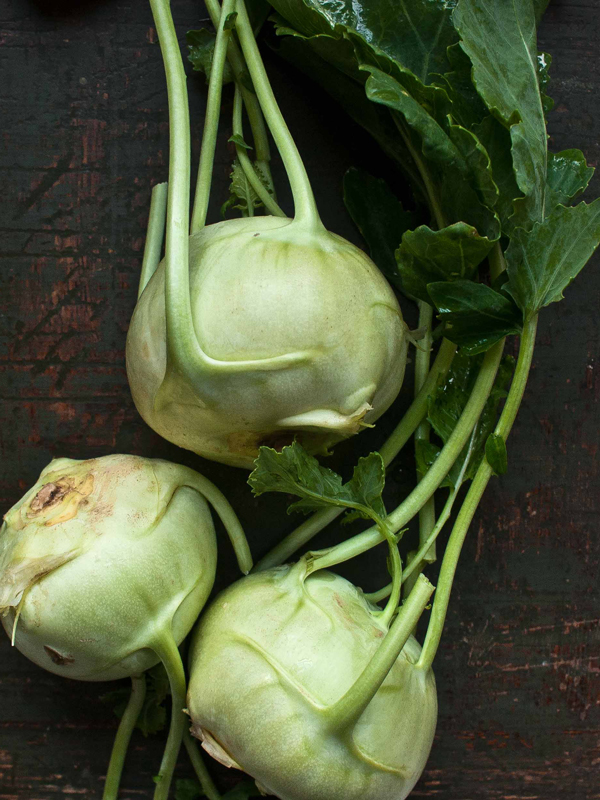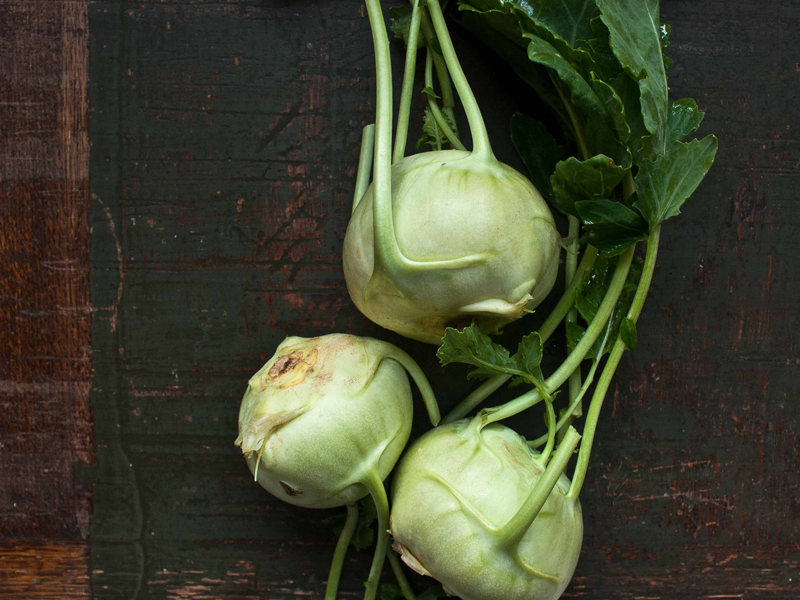 Looking like an overblown radish crossed with a groping space squid that grows in the ground, the kohlrabi doesn’t make many people’s lists of most-anticipated summer produce. Which is a shame, because this awkward little crucifer, while not as popular as its close cousins kale, cabbage and broccoli, is a delicious, versatile ingredient for warm-weather cooking.
Looking like an overblown radish crossed with a groping space squid that grows in the ground, the kohlrabi doesn’t make many people’s lists of most-anticipated summer produce. Which is a shame, because this awkward little crucifer, while not as popular as its close cousins kale, cabbage and broccoli, is a delicious, versatile ingredient for warm-weather cooking.
SUMMER KOHLRABI – Brassica oleracea
A member of the cabbage family, kohlrabi carries a signature sweet-but-peppery flavor profile, with a taste and texture reminiscent of broccoli stems. When buying kohlrabi, pick vegetables that are firm and solid, never squishy. They will keep in your refrigerator for a week or more.
All parts of the kohlrabi are edible, though most people just stick to the bulbous bottom. The leaves and stems are best sautéed or added to a stir-fry. The bulb can be eaten raw, which maintains its super-crisp texture and mild bite, or it can be roasted, sautéed, steamed, or boiled and mashed like a potato. When serving raw, you may want to gauge the thickness of the skin—if it feels particularly thick and rubbery, you can remove it with a vegetable peeler. But the skin is perfectly edible. Many people actually eat kohlrabi right out of the garden, like an apple, in big crunchy bites.
Don’t worry if that doesn’t sound appealing to you; kohlrabi absorbs other flavors excellently, making it the perfect backdrop for summer salads and slaws, like the one on the next page. It can also be used as a substitute for turnips, white radishes or celeriac in recipes that call for those vegetables. So the next time you’re in the produce aisle, take a second and get to know the much misunderstood kohlrabi. It’s not flashy. It doesn’t have its own bumper sticker campaign, but you might just fall in love all the same.
View the Summer 2014 Share PDF
Back to Summer 2014 Share articles
